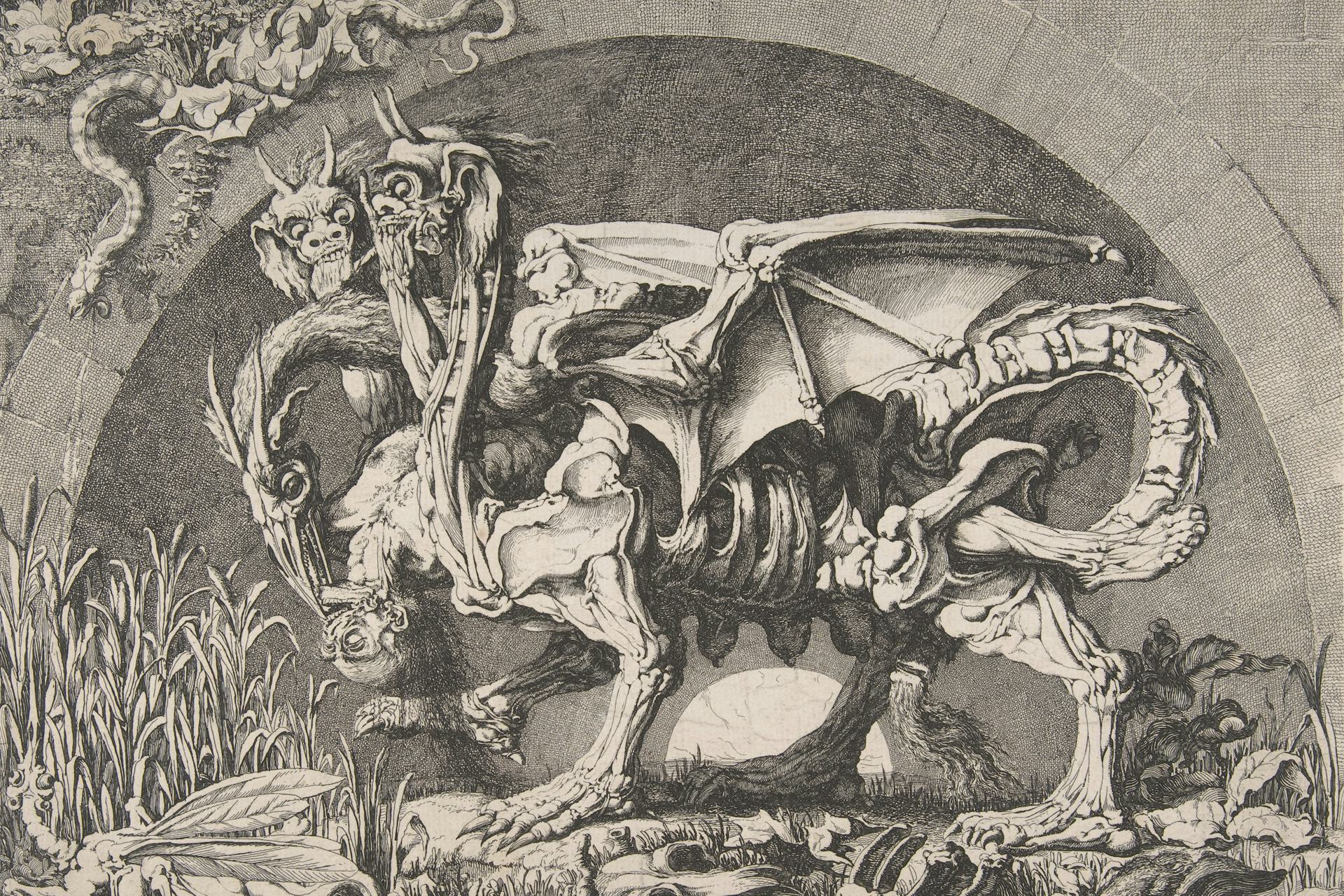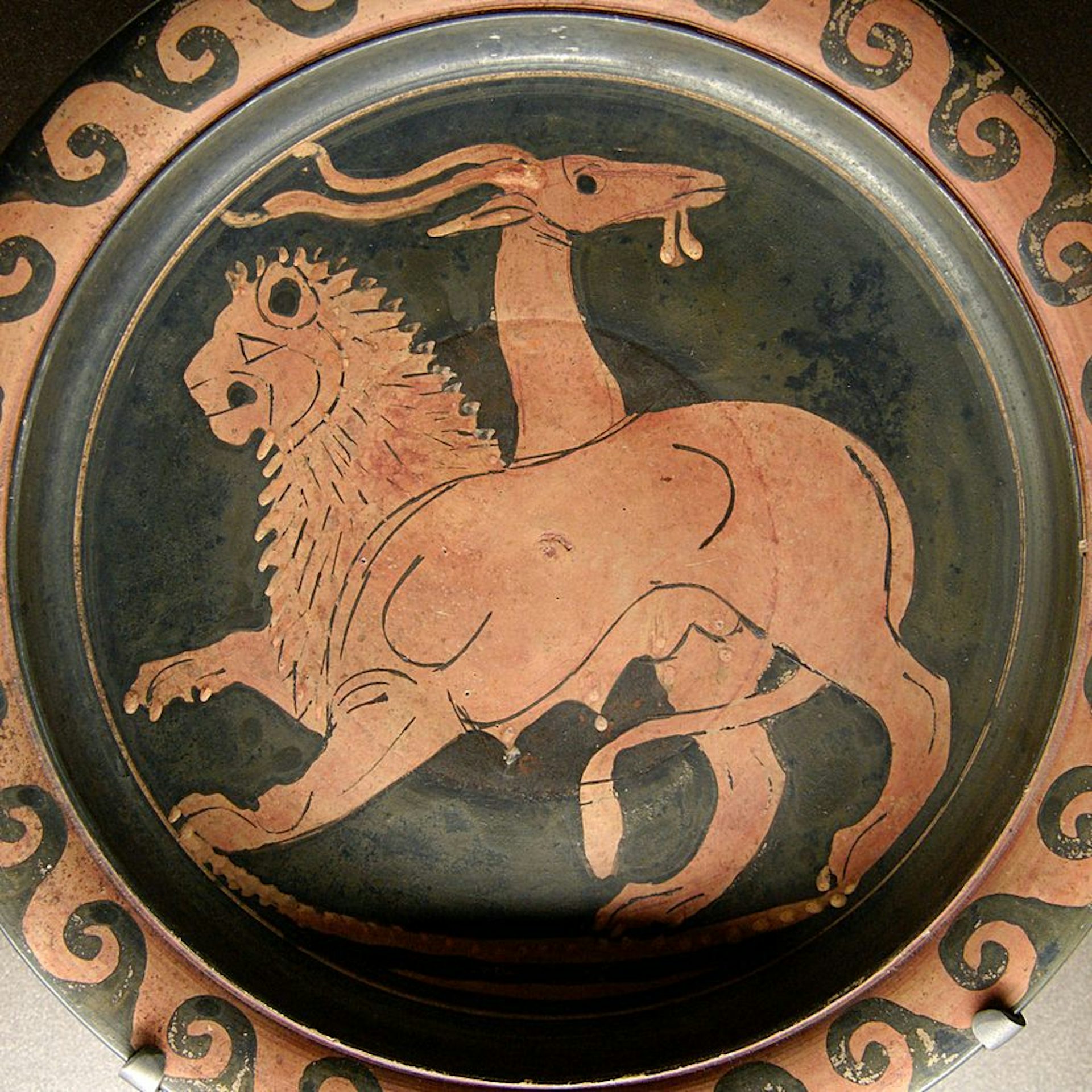Chimera

The Chimera by Louis Jean Desprez (ca. 1777–84)
The Metropolitan Museum of ArtPublic DomainOverview
The Chimera, one of the terrifying offspring of Typhoeus and Echidna, was a hybrid monster made up of the body parts of a lion, a goat, and a snake. Many sources claimed that it also breathed fire. For years, the Chimera terrorized the inhabitants of the foothills where it had made its home—a reign that only ended with the arrival of the hero Bellerophon, a son of Poseidon. Riding the winged horse Pegasus, Bellerophon tracked down the Chimera, fought it, and killed it.
Etymology
The Chimera’s name comes from the Greek word chimaira, meaning “one-year-old animal” or, more specifically, “she-goat.” It is related to other Indo-European words for baby livestock, such as the Old Norse gymbr (“young sheep”). The name “Chimera” may also be related to the Greek cheimōn/cheima and the Indo-European ǵʰ-ei-m-, meaning “winter.”[1]
Pronunciation
English
Greek
Chimera Χίμαιρα Phonetic
IPA
[ki-MEER-uh, kahy-] /kɪˈmɪər ə, kaɪ-/
Attributes
Locale
The Chimera was said to have lived in the mountains of Lycia, an ancient kingdom on the southwest coast of modern Turkey. The geographer Strabo traced the Chimera to an even more specific location: Mount Cragus on the coast of Lycia.[2] In Virgil’s Aeneid, the Chimera came to live at the gates of the Underworld (in the company of many other mythical monsters) after it was defeated by Bellerophon.[3]
Appearance and Abilities
The Chimera was a hybrid monster, comprising parts of a lion, a goat, and a snake. The earliest description of the creature comes from Homer’s Iliad, where it is said that the Chimera was “in the fore part a lion, in the hinder a serpent, and in the midst a goat, breathing forth in terrible wise the might of blazing fire.”[4] Hesiod gives the same description,[5] as do all major subsequent literary sources.
The Chimera also breathed fire, though Hesiod and later writers specified that it was only the goat’s head (the middle one) that held this power.[6]
Iconography
In the visual arts, the Chimera was commonly represented with the head of a lion in front, the head of a goat in the middle, and a serpent tail. There were some small variations—for example, the Chimera could be represented with or without a mane, with the forelegs of a goat (in addition to a goat’s head), or even without any serpent tail.[7]

Apulian red-figure dish showing the Chimera by the Lampas Group (ca. 350–340 BCE).
JastrowPublic DomainFamily
Family Tree
Mythology
The origins of the Chimera are obscure. Ancient sources agreed that the hybrid monster was the offspring of Typhoeus and Echidna and lived somewhere in Lycia. According to Homer’s Iliad, the Chimera was raised by a certain Amisodarus to be “a bane to many men.”[10] Beyond this detail, the Chimera only shows up in the mythology of Bellerophon.
In the common tradition,[11] Bellerophon had incurred the unjust anger of Proetus, the king of Argos (who wrongly believed that Bellerophon had seduced his wife). Proetus wanted Bellerophon dead but was unwilling to carry out the deed himself. Thus, he sent Bellerophon to his friend Iobates, king of Lycia, with a letter. Unbeknownst to Bellerophon, the letter contained instructions that the bearer was to be killed straight away.
When Iobates read the letter, he was understandably hesitant to carry out Proetus’ dirty work himself. He therefore came up with the idea of sending Bellerophon to fight the Chimera, which was terrorizing the countryside, fully expecting the monster to easily kill the mortal hero.
But Bellerophon, who was a son of the sea god Poseidon, had the favor of the gods. The poet Pindar tells of how Bellerophon was able to tame the immortal winged horse Pegasus with the help of Athena and the prophet Polyidus.[12]
Soaring atop Pegasus, Bellerophon tracked down the Chimera and attacked it from above. According to one tradition, transmitted by a relatively late source, the hero came up with a clever strategy to kill the Chimera: he attached a ball of lead to the end of a spear, which he then thrust into the monster’s fire-breathing mouth. The Chimera choked on the molten lead.[13]

Mosaic depicting Bellerophon killing the Chimera (ca. 300–270 BCE). Rhodes Archaeological Museum, Rhodes, Greece.
TobyJPublic DomainPop Culture
The Chimera has made numerous appearances in modern popular culture, though liberties are often taken. There is a kind of Chimera in the 2012 film Wrath of the Titans, though it differs considerably in appearance from the traditional Chimera of Greek myth (for example, instead of having the heads of a lion, a goat, and a snake, this Chimera has two heads and the wings of a bat).
In the 2000 film Mission: Impossible 2, the name Chimera is given to a fictional virus produced by a pharmaceutical company in order to generate demand for its antidote (appropriately called Bellerophon).
The Chimera frequently appears in literature as well. In the first installment of Rick Riordan’s Percy Jackson and the Olympians series, Percy Jackson fights the Chimera and its mother, Echidna, on top of the Gateway Arch in St. Louis, Missouri. There are also references to Chimeras in some fantasy novels, such as J. K. Rowling’s Harry Potter series.
Finally, the Chimera has been adapted as a monster in various television shows, including Super Sentai/Power Rangers, Mon Colle Knights, and Yu-Gi-Oh!, as well as numerous video games and video game franchises, including Warcraft, Final Fantasy, and Age of Mythology.